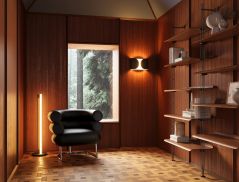
“Most children enjoy running around in circles.” This is what Japanese architect Takaharu Tezuka shared, when interviewed about what motivated his design for Muku Nursery in Shizuoka, Japan. The outcome is what you see on the cover of this issue, a cluster of buildings each with a circular footprint. It reflects his practice of always asking how a project is going to enhance the lives of those who use it, before he starts designing it.
Tezuka’s approach to architecture is reflective of a larger trend that is less of the “me”, and more of the “we”. It was most noticeable at the Kuala Lumpur Architecture Festival 2019’s conference, DATUM:KL, held in July. Across three days, speakers from all over the world repeated themes about the importance of complementing nature, the shying away from designing edifices, and a deep-seated respect for the community, locality and placemaking.
Elsewhere in this issue, we showcase two adaptive reuse projects. The Temasek Shophouse is made up of five three-storey conservation shophouses in Singapore that date back to 1928 and have been successfully refurbished by Surbana Jurong Consultants. Kaomai Estate 1955 is a project in Chiang Mai, Thailand that used to be a tobacco processing estate.
Look out too for the curvaceous and dramatic Malaysia International Trade and Exhibition Centre by RSP Architects, located in Kuala Lumpur. On a smaller scale (but no less short on drama either) is the Marquee nightclub and Avenue cocktail lounge by ICRAVE in Marina Bay Sands Singapore. Occupying what was formerly a three-storey theatre with a 21m ceiling height, both venues are designed as contrasts of each other and complete sensorial experiences.
Preview Issue 112 here.
Subscribe to d+a or purchase a digital copy of Issue 112.


 Share
Share








